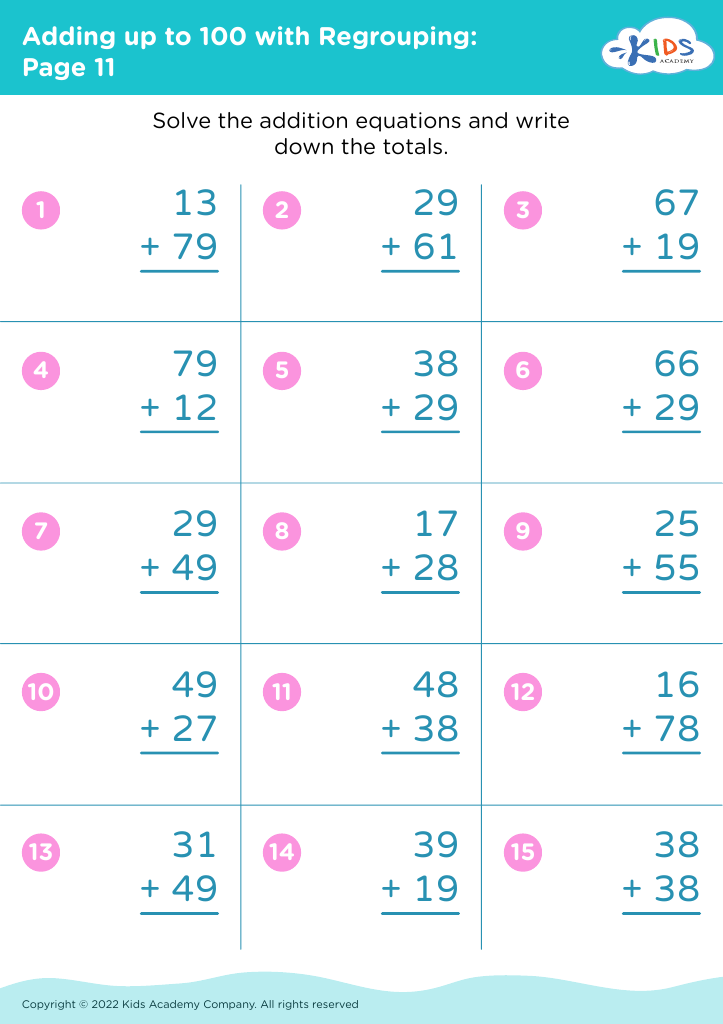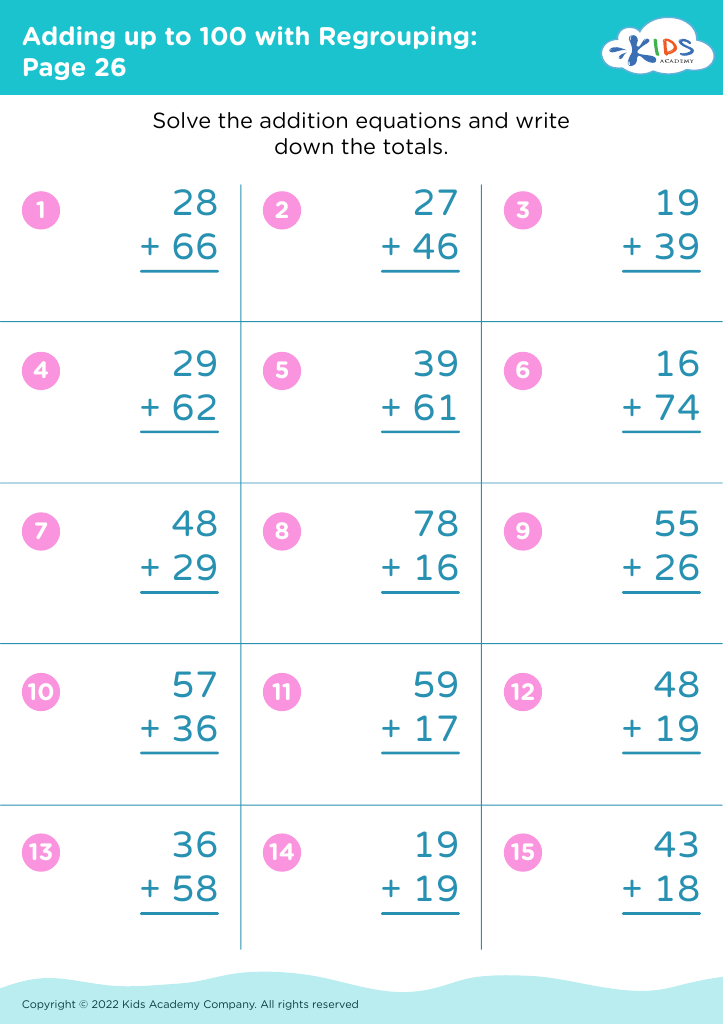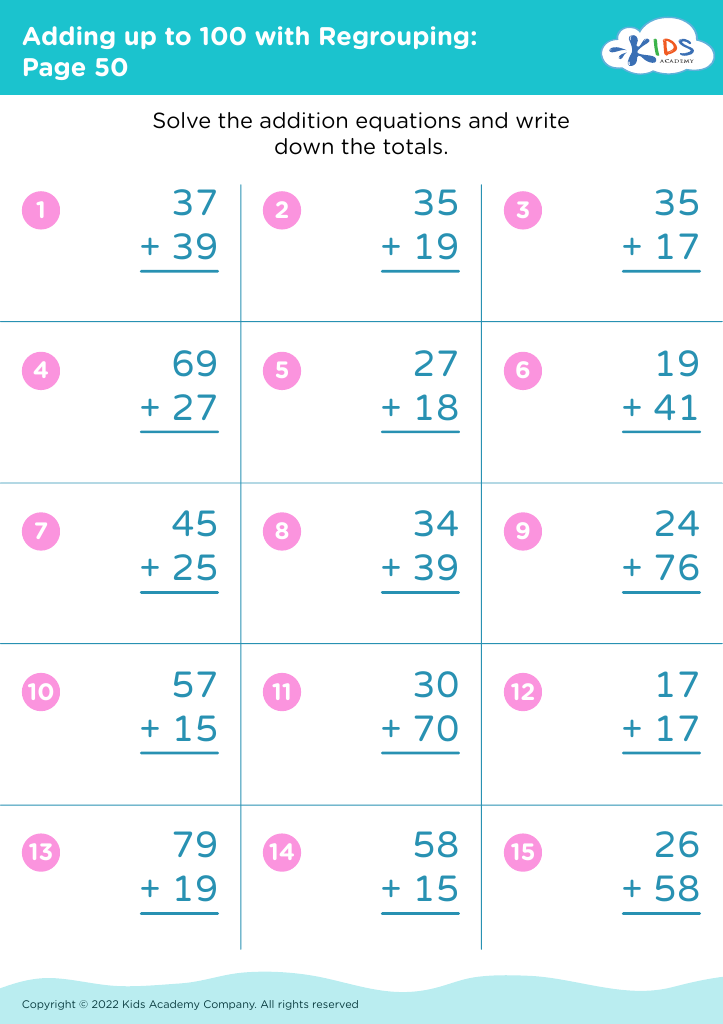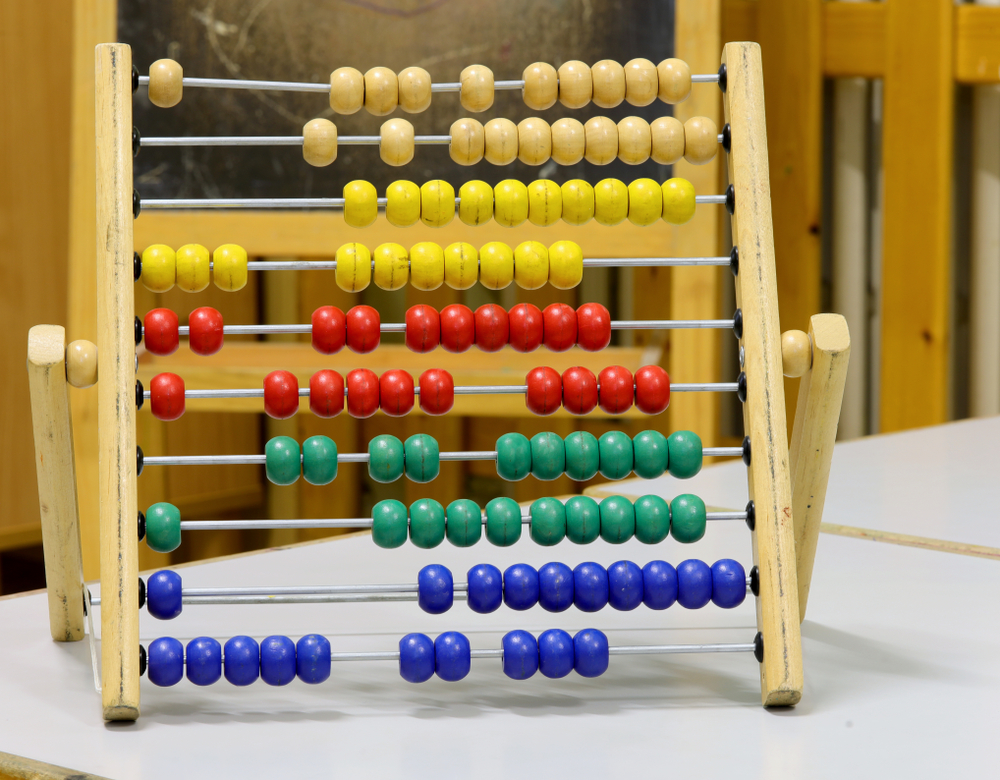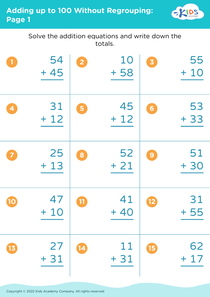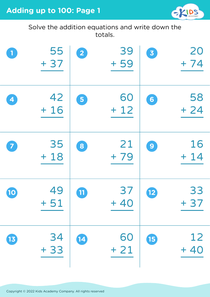Color Identification Adding up to 100 with Regrouping Worksheets for Ages 6-8
3 filtered results
-
From - To
Discover the exciting world of "Color Identification Adding Up to 100 with Regrouping Worksheets" designed specifically for children ages 6-8! These engaging worksheets combine essential math skills with vibrant color activities, making learning fun and interactive. As students explore addition problems that require regrouping, they'll also practice color recognition, enhancing their cognitive development. Our thoughtfully crafted exercises promote critical thinking and problem-solving abilities while keeping little learners motivated. Perfect for in-class activities or at-home fun, these worksheets provide an effective way to master math skills in a playful environment. Foster a love for learning with our colorful, educational resources today!
Color identification and the concept of adding up to 100 with regrouping are both crucial skills for children aged 6-8. Understanding colors enhances a child’s ability to categorize and make connections between different objects, which enriches their cognitive development and improves their observational skills. Furthermore, using colors in activities can make learning more engaging, helping children to remember concepts better.
When it comes to addition, the ability to add up to 100 using regrouping equips children with foundational math skills. Regrouping, or the process of carrying over numbers when sums exceed ten, prepares young learners for more advanced arithmetic. Mastery of this skill sets the stage for successful problem-solving and critical thinking.
Integrating color identification with math activities can also foster creativity and critical thinking. For example, teachers might use colored objects or blocks to visually represent numbers when teaching addition, making math more accessible and enjoyable.
Ultimately, parents and teachers should embrace these dual skills, as they build a stable academic foundation while also supporting a child’s overall development—both socially and emotionally—in a fun and interactive way. Investing time in these areas can significantly impact a child's learning journey.
